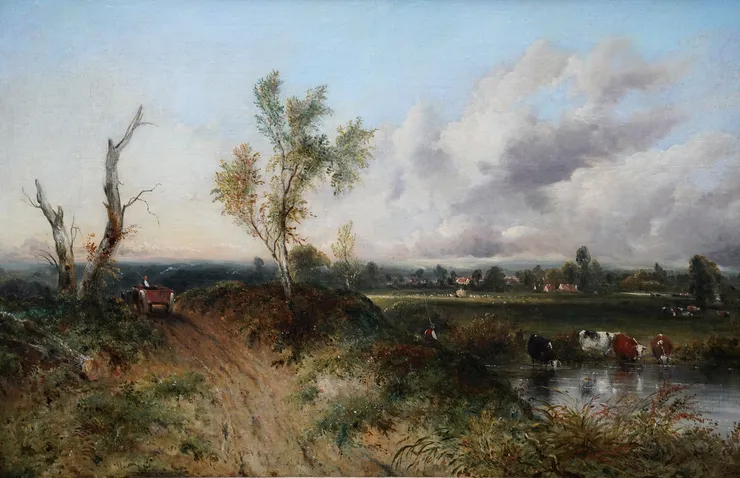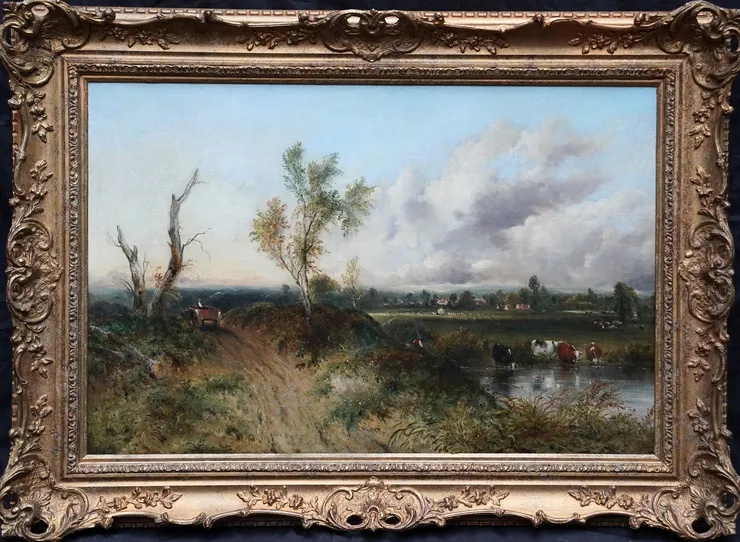Frederick Waters Watts (1800-1862)
| Artist Name | Frederick Waters Watts (1800-1862) |
|---|---|
| Title | Drover with Cattle Watering in an Expansive Landscape |
| Description | This lovely British 19th century landscape oil painting is by noted artist Frederick Waters Watts. Painted circa 1840, the composition is a drover with cattle watering in an extensive landscape. On the left hand side of the painting is a track, wagon and blasted tree. On the right hand side are the cattle in a river with fields and more cattle beyond leading to dwellings in the distance and a continuation of the landscape. The brushwork and detail are superb. The present dramatic, windswept landscape is typical of Watts' oeuvre, which was heavily influenced by John Constable (1776-1837), whilst also revealing a debt to earlier generations of Dutch landscape painters, which included figures such as Jacob van Ruisdael (1628/29-1682) and Meindert Hobbema (1638-1709). This is an excellent example of a Frederick Waters Watts painting. |
| Provenance | Coombs and Percival Ltd. London Art dealers. |
| Medium | Oil on Canvas |
| Size | 30 x 20 inches |
| Frame | Housed in an ornate gilt frame. Framed size is 37 inches by 27 inches and in good condition. |
| Condition | Good condition. |
| Biography | Frederick William Watts' early years have always been something of a mystery. It is thought that he was born in Bath, 7th October 1800 and baptised the following year in St. Albans as William Watts. It is most probable he enrolled in the RA Schools in 1817 as William Watts subsequently changing his name to Frederick William Watts to avoid confusion with the landscape painter, William Watts (1752-1851). He was awarded Silver Medals at the RA School 1819-1821 and exhibited at the London Royal Academy from 1821 until 1862. Watts also exhibited at the British Institution, Suffolk Street Galleries and at the New Watercolour Society. Watts lived in Hampstead from 1821, where John Constable (1776-1837) also lived, and, some twenty-five years older, was to have a marked influence on Watts’s style. Although it is not known that they ever met, Watts would undoubtedly have been familiar with his work and Hampstead was a relatively small town. Watts painted landscapes throughout England and Wales, visiting north and south Wales, Derbyshire, Devon, Isle of Wight, Sussex and, of course, Suffolk and Essex. He painted many views around what is now north London and Middlesex and views on the Thames. Watts was highly successful in his portrayal of the English landscape and widely collected in his lifetime and throughout the twentieth century in Britain, Europe and North America. His work can be found in: London, Victoria and Albert Museum and The Tate. |
| Price | £6800 |

